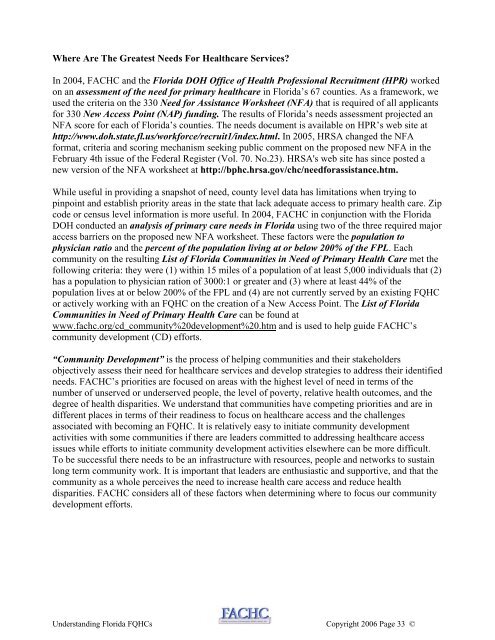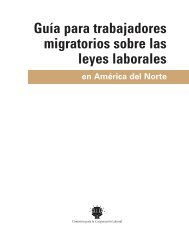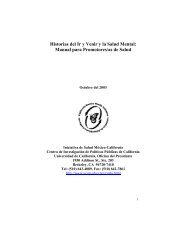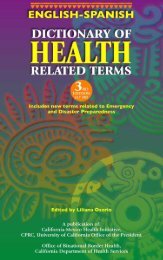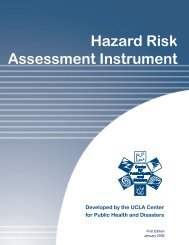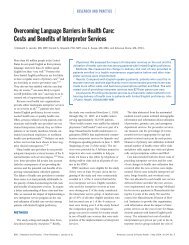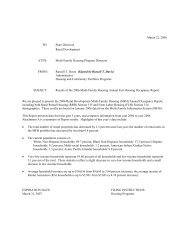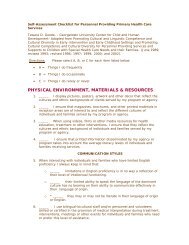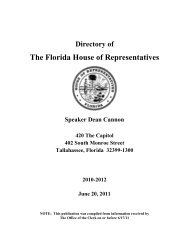Guide to Understanding Florida's FQHCs and 330 Expansion ...
Guide to Understanding Florida's FQHCs and 330 Expansion ...
Guide to Understanding Florida's FQHCs and 330 Expansion ...
You also want an ePaper? Increase the reach of your titles
YUMPU automatically turns print PDFs into web optimized ePapers that Google loves.
Where Are The Greatest Needs For Healthcare Services<br />
In 2004, FACHC <strong>and</strong> the Florida DOH Office of Health Professional Recruitment (HPR) worked<br />
on an assessment of the need for primary healthcare in Florida’s 67 counties. As a framework, we<br />
used the criteria on the <strong>330</strong> Need for Assistance Worksheet (NFA) that is required of all applicants<br />
for <strong>330</strong> New Access Point (NAP) funding. The results of Florida’s needs assessment projected an<br />
NFA score for each of Florida’s counties. The needs document is available on HPR’s web site at<br />
http://www.doh.state.fl.us/workforce/recruit1/index.html. In 2005, HRSA changed the NFA<br />
format, criteria <strong>and</strong> scoring mechanism seeking public comment on the proposed new NFA in the<br />
February 4th issue of the Federal Register (Vol. 70. No.23). HRSA's web site has since posted a<br />
new version of the NFA worksheet at http://bphc.hrsa.gov/chc/needforassistance.htm.<br />
While useful in providing a snapshot of need, county level data has limitations when trying <strong>to</strong><br />
pinpoint <strong>and</strong> establish priority areas in the state that lack adequate access <strong>to</strong> primary health care. Zip<br />
code or census level information is more useful. In 2004, FACHC in conjunction with the Florida<br />
DOH conducted an analysis of primary care needs in Florida using two of the three required major<br />
access barriers on the proposed new NFA worksheet. These fac<strong>to</strong>rs were the population <strong>to</strong><br />
physician ratio <strong>and</strong> the percent of the population living at or below 200% of the FPL. Each<br />
community on the resulting List of Florida Communities in Need of Primary Health Care met the<br />
following criteria: they were (1) within 15 miles of a population of at least 5,000 individuals that (2)<br />
has a population <strong>to</strong> physician ration of 3000:1 or greater <strong>and</strong> (3) where at least 44% of the<br />
population lives at or below 200% of the FPL <strong>and</strong> (4) are not currently served by an existing FQHC<br />
or actively working with an FQHC on the creation of a New Access Point. The List of Florida<br />
Communities in Need of Primary Health Care can be found at<br />
www.fachc.org/cd_community%20development%20.htm <strong>and</strong> is used <strong>to</strong> help guide FACHC’s<br />
community development (CD) efforts.<br />
“Community Development” is the process of helping communities <strong>and</strong> their stakeholders<br />
objectively assess their need for healthcare services <strong>and</strong> develop strategies <strong>to</strong> address their identified<br />
needs. FACHC’s priorities are focused on areas with the highest level of need in terms of the<br />
number of unserved or underserved people, the level of poverty, relative health outcomes, <strong>and</strong> the<br />
degree of health disparities. We underst<strong>and</strong> that communities have competing priorities <strong>and</strong> are in<br />
different places in terms of their readiness <strong>to</strong> focus on healthcare access <strong>and</strong> the challenges<br />
associated with becoming an FQHC. It is relatively easy <strong>to</strong> initiate community development<br />
activities with some communities if there are leaders committed <strong>to</strong> addressing healthcare access<br />
issues while efforts <strong>to</strong> initiate community development activities elsewhere can be more difficult.<br />
To be successful there needs <strong>to</strong> be an infrastructure with resources, people <strong>and</strong> networks <strong>to</strong> sustain<br />
long term community work. It is important that leaders are enthusiastic <strong>and</strong> supportive, <strong>and</strong> that the<br />
community as a whole perceives the need <strong>to</strong> increase health care access <strong>and</strong> reduce health<br />
disparities. FACHC considers all of these fac<strong>to</strong>rs when determining where <strong>to</strong> focus our community<br />
development efforts.<br />
<strong>Underst<strong>and</strong>ing</strong> Florida <strong>FQHCs</strong> Copyright 2006 Page 33 ©


